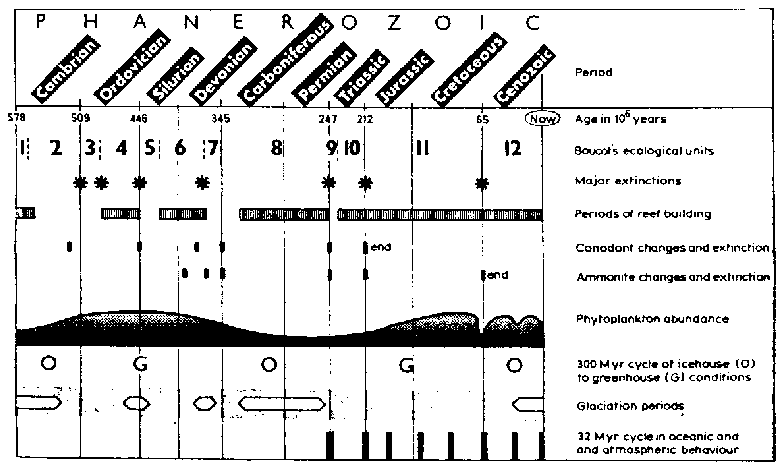 |
Science Frontiers ONLINE No. 31: Jan-Feb 1984 |
|
|
Wanted: disasters with a 26-million-year period
J. Sepkoskiand and D. Raup, two researchers at the University of Chicago, have drawn up graphs showing the numbers of families of marine organisms that have vanished from the fossil rec ord over the eons. From this overview of manifest mass extinction emerged a puzzling and potentially profound pattern. Roughly every 26 million years over the last 250 million years, the number of extinctions jumped well above the background level. Some cyclic phenomenon seems to have been killing off life forms on a systematic basis. But no natural 26-million-year cycles are known although meteors and comets are favored causes of mass extinctions these days, they display no such cyclic period.
(Simon, C.; "Pattern in Mass Extinctions," Science News, 124:212, 1983.)
Comment. Instead of looking outward to astronomical catastrophism, perhaps we should look inward. The earth itself may undergo cyclic paroxysms; or life might undergo intrinsic phases of decline and rejuvenation.
 |
| Periodic events in the evolutionary time scale. The 300-million-year cycle shown involves alternations between "icehouse" conditions (O) and "greenhouse" conditions (G). These may be due to changes in heat convention within the earth. |